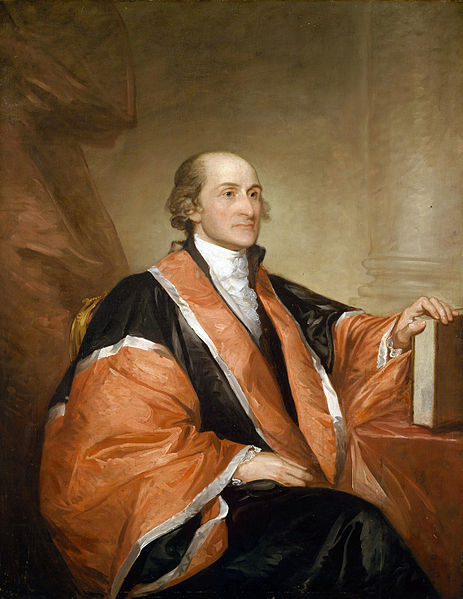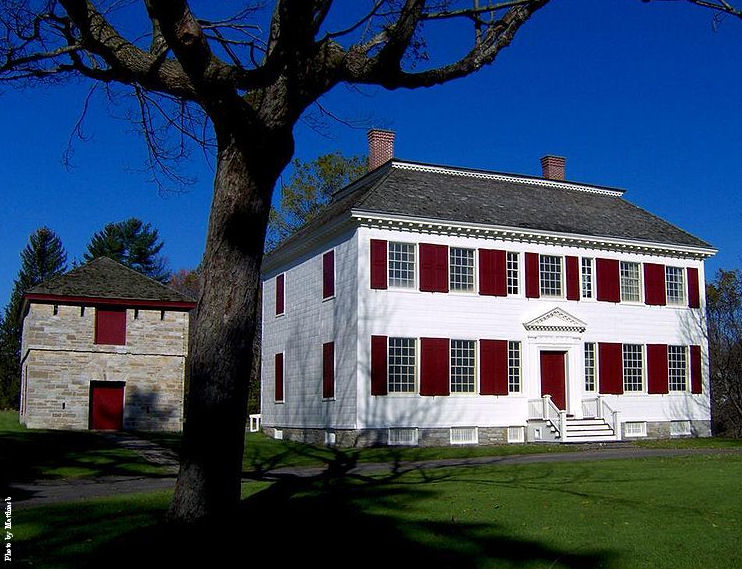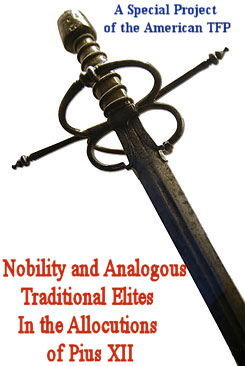When hostilities ended in October of 1781, the thirteen newly independent colonies formed a loose central power regulated by the Articles of Confederation, which had been drafted by the Continental Congress. The Articles provided for a limited central power, especially regarding foreign policy, declaration of war, foreign commerce, and so on. However, it had little authority within each state. There was no head of state nor common judiciary power.
Immediately following independence, a movement began within the state assemblies that aimed to eliminate social privileges and achieve the greatest possible leveling in both the legislative and economic spheres. The ultimate goal of this movement was to undermine the economic base of the aristocratic elites and to diminish or even eliminate their predominance in society. Within the first fifteen years, all the state assemblies had, as William, Current, and Freidel point out, “eliminated the legal rights of primogeniture and entail, which before the war had helped to maintain a landed aristocracy by transferring an entire estate to the oldest son (when a man died without a will) and by keeping the estate intact from generation to generation.(1)

John Jay, an American politician, statesman, diplomat, a Founding Father of the United States, and the first Chief Justice of the United States.
The American Revolution was, therefore, the first step toward the gradual destruction of the great rural properties, the economic base of the patrician families of the colonial era. Lands belonging to the Crown, the lord proprietors, and the Loyalists were expropriated or confiscated and divided into smaller farms. With the passing of subsequent generations, the large properties that still remained were also parceled out with the application of laws against primogeniture and entail. “Except in the South,” says von Borch, “the upper class began to sever its ties with the soil and take on the leadership of an industrial and financial, economic society.”(2)
The formation of a confederation of American states at the end of the War of Independence did not bring the desired peace and social harmony. “By the fall of 1786,” historian Minor Myers notes, “…many came to see the Articles of Confederation as a plan for anarchy rather than government.”(3)

Johnson Hall State Historic Site was the home of Sir William Johnson, who founded Johnstown, NY. During the American Revolution, the rebel government in New York seized Johnson Hall because the Johnsons had to escape to Canada because they were Loyalists. In 1779 the state sold the house to Silas Talbot, a migrant from New England.
All the states, from New England to South Carolina, experienced the negative effects of the egalitarian atmosphere spread by the Revolution’s rhetoric, which sought to eliminate all superiorities based on any circumstances other than merit. Republican aversion to inherited inequalities was fully vented in a general denunciation of all inequalities or differences, be they economic, social, intellectual, or professional. Radical republicans attacked any manifestation of social superiority or refinement as contrary to the spirit and principles of the Revolution. Even simple references to degrees of respectability concealed an aristocratic tone for the most radical egalitarian republicans.(4)
The highest positions of political life, vacated by Loyalists who had gone into exile, were occupied by a new political and economic elite that, unknown a decade before, now filled the assembly seats. “The most pronounced social effect of the Revolution was not harmony or stability but the sudden appearance of new men everywhere in politics and business,” writes Wood, “‘men, respectable neither for their property, their virtue, nor their abilities,’ were taking a lead in public affairs.”(5)
John Jay, a renowned member of the traditional elites in New York, complained that the new authorities “are giving rank and Importance to men whom Wisdom would have left in obscurity.” The “state legislatures were being filled and yearly refilled with different faces, often with ‘men without reading, experience, or principle,’” as the future president James Madison lamented.(6)
Many, especially in the South, had hoped that the Revolution would reduce social instability. Yet the exact opposite took place. “Equality was not creating harmony and contentment after all,” comments Wood, “Indeed, it was noted, equality had become the very cause of the evils it was designed to eliminate.”(7)
When the state constitutions were developed, the prevailing mood was based on the revolutionary principle of transferring sovereignty to the “people.” Its immediate consequence in the political life of several states was turmoil. Riots, electoral rallies, popular conventions to manifest the will of the “people” in the smallest aspects of public life became widespread. According to Wood, in all the states, “an excess of power in the people was leading not simply to licentiousness but to a new kind of tyranny, not by the traditional rulers, but by the people themselves—what John Adams in 1776 had called a theoretical contradiction, a democratic despotism.”(8) Further on, Wood adds:
“Americans thus experienced in the 1780s not merely a crisis of authority—licentiousness leading to anarchy—which was a comprehensible abuse of republican liberty, but also a serious shattering of older ways of examining politics and a fundamental questioning of majority rule that threatened to shake the foundations of their republican experiments.”(9)

Whiskey Insurrection in Pennsylvania, was a tax protest in the United States beginning in 1791, during the presidency of George Washington. This is an 1880 illustration of a tarred and feathered tax collector being made to ride the rail
The utopia of a “natural aristocracy”—that is, nonhereditary social elites—exercising a salutary influence over a virtuous and reflective people, as purposed by the theoreticians of republicanism, proved a pipe dream. As Wood points out, “the revolution seemed to be having precisely the opposite effect: enabling socially insignificant men…to gain positions of dominance without passing through the social ranks and acquiring the recognizable dignities of social leadership.”(10)
By making incapable men leaders, the people flaunted their power, turning against the whole patrician class. It was not what the traditional elites had expected. Wood notes, “the planters [in the South] found themselves confronted with widespread challenges to their authority that they had never anticipated in 1776.”(11)
Lacking a strong executive power and with the legislative assemblies overwhelmed by parochial disputes, many states sank into a turbulent situation wherein government became next to impossible. Some of them were victims of violent popular explosions, making any type of effective federal government virtually nonexistent.

“The most pronounced social effect of the Revolution was not harmony or stability but the sudden appearance of new men everywhere in politics and business,” writes Wood, “‘men, respectable neither for their property, their virtue, nor their abilities,’ were taking a lead in public affairs.”
All these factors appeared to many to foreshadow the failure of the revolutionary experiment. Obviously, some type of social control and centralized government was necessary to resolve the crisis. “The growing radicalism in the states was intimidating the propertied classes, who began to suggest that a strong central government was necessary to insure ‘domestic tranquility,’ guarantee ‘a republican form of government,’ and protect property ‘against domestic violence.’”(12)
“The Declaration notwithstanding,” Edward Pessen concludes, “the leaders of colonial society continued to think, after the Revolution as before, that the few with a special or large ‘stake in society’ could alone be counted on to rule responsibly.”(13)
(1) T. Harry Williams, Richard N. Current, and Frank Friedel, A History of the United States (to 1876) (New York: Alfred A. Knopf, 1962), p. 143.
(2) Herbert von Borch, The Unfinished Society, trans. Mary Ilford, (New York: The Bobbs Merrill company, 1963), p. 217.
(3) Minor Myers, Jr., Liberty Without Anarchy (Charlottesville, Va.: The University Press of Virginia, 1983), p. 70.
(4) Cf. Gordon S. Wood, The Creation of the American Republic, 1776-1787 (New York: Harper & Row, 1957), pp. 399, 400, 402.
(5) Wood, Creation of the American Republic, pp. 476-477, quoting “Sober Citizen,” To the Inhabitants of the City and County of New-York, Apr. 16, 1776 (N.Y., 1776).
(6) Quoted in Wood, Creation of the American Republic, p. 477.
(7) Wood, Creation of the American Republic, p. 398.
(8) Ibid., p. 404.
(9) Ibid., p. 411.
(10) Ibid., p. 481.
(11) Ibid., p. 482.
(12) Thomas R. Dye and L. Harmon Zeigler, The Irony of Democracy: An Uncommon Introduction to American Politics (Belmont, Calif.: Duxbury Press, 1972), 2nd ed., p. 32.
(13) Edward Pessen, “Status and Social Class in America,” in Making America: The Society and Culture of the United States, ed., Luther S. Luedtke (Washington, D.C.: United States Information Agency, 1988), p. 275.
Plinio Corrêa de Oliveira, Nobility and Analogous Traditional Elites in the Allocutions of Pius XII: A Theme Illuminating American Social History (York, Penn.: The American Society for the Defense of Tradition, Family, and Property, 1993), Appendix I, pp. 264-267.










